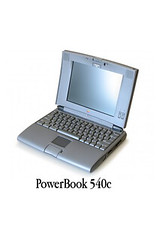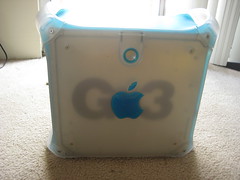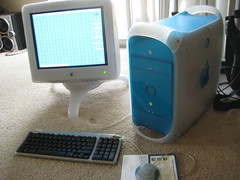
Since you all were nice enough to share a little bit about yourselves last week, it’s my turn.
My name is Dave Lawrence. I’m a 27-year-old communications specialist for a local credit union in my hometown of Jackson, MI – a smallish city along the I-94 corridor about an hour and a half west of Detroit.
I graduated with a degree in English/journalism from Adrian College and came back home to find my job.

While I worked with Macs at the campus newspaper, I didn’t get serious about them until the winter of 2005, when I bought my first computer – and first Mac: an iBook G4. Since then, I haven’t looked back. My collection has grown to include an iBook G3 clamshell, an iMac G3, two Mac SEs, a PowerMac G4, an iMac G4, and – most recently – a PowerMac G3.
My first Newton came in December 2006, and was more or less something to mess around with. I felt you can’t have a truly righteous Apple collection without a Newton, so I bought a MessagePad 110. Later, in the fall of 2007, I launched Newton Poetry. I also have an eMate.
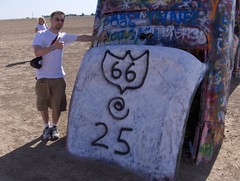
Besides Macs and Newtons, I love to travel, read, watch “The Office,” head out on the town with friends, and get involved in my community. I’m in a local Rotary club, am on the board for a recycling non-profit, and get involved in politics whenever I can.
I’ve made several life-changing trips in the past few years, including driving down Route 66 from Chicago to Santa Monica, taking the northern route from Michigan to Seattle, and exploring Revolutionary War sites in New England. This summer, my big trip will include a cross-Canada drive to Vancouver for the Worldwide Newton Conference.
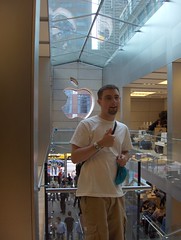
I do Newton Poetry because the Newton community fascinates me, and the device is so much fun to use. There’s still an audience out there who craves information about the Newton – how to make it work, how to connect it with modern Macs, where the Newton ideal will take us in the years ahead.
Also, I love to fiddle with computers and projects, and Newton Poetry gives me an outlet to write about those projects. What I found was that people who, say, want to install an Airport card in their iBook, like to have help as they do it. As a result, that post is one of my most popular.
There’s tons more about me, of course, so feel free to browse my personal blog, follow me on Twitter, or hang on and see where else Newton Poetry takes us.







